
- Subject:
- Applied Science
- Biology
- Life Science
- Material Type:
- Module
- Date Added:
- 07/10/2017

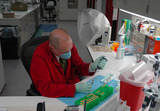
By the end of this section, you will be able to:Identify and describe the properties of lifeDescribe the levels of organization among living thingsRecognize and interpret a phylogenetic treeList examples of different sub disciplines in biology

By the end of this section, you will be able to:Identify and describe the properties of lifeDescribe the levels of organization among living thingsRecognize and interpret a phylogenetic treeList examples of different sub disciplines in biology
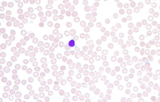
This video shows scanning a Wright's stained blood smear slide with pauses to view leukocytes. The video was taken at 630X under a brightfield microscope. This video is compatible with a laboratory lesson in which students observe, categorize, and count leukocytes. More than 100 leukocytes are viewed in this video. Note, this video does not have narration.Video credit: Emily Fox
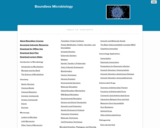
Microbiology is a broad term which includes virology, mycology, parasitology, bacteriology, immunology, and other branches. A microbiologist is a specialist in microbiology and these related topics. Microbiological procedures usually must be aseptic and use a variety of tools such as light microscopes with a combination of stains and dyes. As microbes are absolutely required for most facets of human life.

This Why Files informative page is part of a series that features the narrative of Bob, the bobtail squid. Bob describes the symbiotic relationship formed between his ancestors and the bioluminescent bacteria that offer him protection from predators. The next page in this series describes the relationship from the enslaved bacteria's perspective and features scientist Margaret McFall-Ngai. Links are provided to glossary terms and a bibliography.

Construct a protein through cereal additions. Model the central dogma of molecular biology by constructing a colorful chain using a simple code (and some delicious cereal).

This powerpoint is a short approx. 5 min interactive that demonstrates the purpose and use of the catalase test. I like to share the short and simple powerpoint interactves in addition to videos that demonstrate the process with the students prior to performing the test in the laboratory setting.

This resource is a video abstract of a research paper created by Research Square on behalf of its authors. It provides a synopsis that's easy to understand, and can be used to introduce the topics it covers to students, researchers, and the general public. The video's transcript is also provided in full, with a portion provided below for preview:
"The skin is the interface between the human body and the environment, and the different features in distinct skin regions, such as different temperatures, humidity levels, gland densities, and pH values, create a variety of niches that can support a diverse skin microbiome. This microbiome includes bacteria, archaea, viruses, fungi, and even mites. A healthy skin microbiome helps maintain skin homeostasis, protects against pathogens, communicates with and trains the immune system, and affects wound healing. However, the skin microbiome can be influenced by many factors, including intrinsic factors like aging and extrinsic factors like cosmetic. Recent advances in molecular biology techniques and next-generation sequencing have drastically increased our understanding of the microorganisms that live on our skin, but the microbes are often still difficult to culture and study..."
The rest of the transcript, along with a link to the research itself, is available on the resource itself.

This resource is a video abstract of a research paper created by Research Square on behalf of its authors. It provides a synopsis that's easy to understand, and can be used to introduce the topics it covers to students, researchers, and the general public. The video's transcript is also provided in full, with a portion provided below for preview:
"Built environment microbiomes are shaped by their occupants and the outside environment. These microbiomes can have a profound impact on the health of its occupants. The International Space Station (ISS) is a uniquely sealed environment, with only the arrival of crewmembers and supplies introducing new microbes. Monitoring the ISS microbiome is important to ensure astronaut health and spacecraft integrity. So, a recent study used samples from two long-term projects, Microbial Tracking 1 and 2, which sampled the same surfaces over two 14-month-long periods. The ISS surface microbiome was dominated by microbes associated with human skin. The most represented groups were Staphylococcus and Malassezia among bacteria and fungi, respectively. Community abundances shifted over time, but did not differ between surfaces. Overall, the metabolism genes tended towards amino acid utilization rather than carbohydrate metabolism..."
The rest of the transcript, along with a link to the research itself, is available on the resource itself.
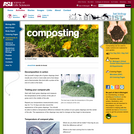
Microorganisms in action!
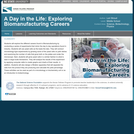
Students will explore the different careers found in Biomanufacturing by conducting a series of experiments that mimic the day to day operations found in industry. Students will use yeast cells as the basis the labs. They will conduct microbiology-type experiments by growing some of the yeast cells on petri dishes and examining the number of cells that grow both on the plates and under the microscope. Next, students will grow yeast cells in a similar fashion to what is seen in large-scale bioreactors. They will analyze the results of the experiment by applying computer skills to create graphs and charts of their results. In addition, Students will also design a filtration apparatus that will separate the cells from the product they are producing and calculate the yield percentage. These activities can be used as part of a microbiology or biochemistry unit or as an introduction to biotechnology.
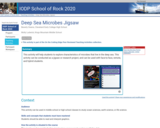
This activity will help students to explore characteristics of microbes that live in the deep sea. This activity can be conducted as a jigsaw or research project, and can be used with face-to-face, remote, and hybrid students.
Provenance: Beverly Owens, Cleveland Early College High School
Reuse: This item is offered under a Creative Commons Attribution-NonCommercial-ShareAlike license http://creativecommons.org/licenses/by-nc-sa/3.0/ You may reuse this item for non-commercial purposes as long as you provide attribution and offer any derivative works under a similar license.
(Note: this resource was added to OER Commons as part of a batch upload of over 2,200 records. If you notice an issue with the quality of the metadata, please let us know by using the 'report' button and we will flag it for consideration.)
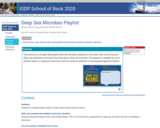
This activity is a Google Slide playlist that will introduce students to microbes that can be found in deep sea sediments, and what roles they play in their environment. This playlist is suitable for use in remote, hybrid, or in-person instruction and can easily be added to a Learning Management System.
Provenance: Molly Ludwick, Kings Mountain Middle School
Reuse: This item is offered under a Creative Commons Attribution-NonCommercial-ShareAlike license http://creativecommons.org/licenses/by-nc-sa/3.0/ You may reuse this item for non-commercial purposes as long as you provide attribution and offer any derivative works under a similar license.
(Note: this resource was added to OER Commons as part of a batch upload of over 2,200 records. If you notice an issue with the quality of the metadata, please let us know by using the 'report' button and we will flag it for consideration.)

Nitrate and phosphate are useful as fertilizers in agriculture and gardening. Nitrate and phosphate aid agricultural production by producing more abundant crops. However, since the mass production of ammonia during the 1940's by way of the Haber process, it has been noted that a phenomenon known as “nitrate pollution” may occur. This pollution can be demonstrated by conducting this simple experiment. This experiment demonstrates two main ideas. The first is a test of what levels of nitrate and phosphate allow for optimum algal growth. The second demonstrates at which levels of nitrate and phosphate algal blooms may occur, causing harm to an aquatic ecosystem (Freeman, 2002).

The following six figures represent electron transport chains functioning within the processes of nitrification and denitrification within the nitrogen cycle, and methanogenesis within the carbon cycle. Each figure is included with and without a legend. Figure 1 represents oxidation of ammonia to nitrite, the first phase of nitrification. Figure 2 represents oxidation of nitrite to nitrate, the second phase of nitrification. Figure 3 represents reduction of nitrate to molecular nitrogen through denitrification. Figure 4 represents oxidation of ammonia to nitrous oxide by ammonia-oxidizing bacteria. Figure 5 represents reduction of nitrate to nitrous oxide by incomplete denitrification. Figure 6 represents reduction of carbon dioxide by hydrogen gas to produce methane.

Enzymes are biocatalyst they accelerate the chemical reaction. They are organic, all enzymes are made of protein but not all enzymes are protein. Certain biological reactions can be catalyzed by RNA called Ribozyme. Protein is a dynamic molecule; its activity depends on the three-dimensional structure. For example, the water droplet size gets flexible, if you touch. Protein folding and three-dimensional structures are vital for activity. There is no living cell without an enzyme, in the living cell; it functions to accelerate the biological reaction. There is a misfolded protein infectious agent called Prion, which causes normal brain protein to misfold which, leads to neurodegratative disease. This module presents concise notes of enzyme basic concepts; bioinformatics tools and few examples of enzymes in everyday life.
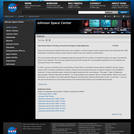
This NASA website provides a summary of a study led by NASA's David McKay that may provide evidence for past life on Mars. McKay and his team found carbonate globule features on the ALH84001 meteorite that appear to be nanofossils. In addition, secondary mineral phases and hydrocarbons provide further evidence for past life. The website features color photographs as well as links to related web pages.
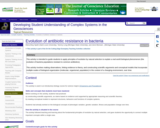
Most students are familiar with the use of antibiotics and antibacterial products; most have heard in various contexts about the problem of bacterial populations becoming resistant to antibiotics over time.
We used this example, relevant to everyday life, to guide students to uncover the complexity of the underlying biological mechanism, and to "see" how the evolution principles they have learned are interconnected and apply to a specific case.
(Note: this resource was added to OER Commons as part of a batch upload of over 2,200 records. If you notice an issue with the quality of the metadata, please let us know by using the 'report' button and we will flag it for consideration.)

These are homework exercises to accompany Kaiser's "Microbiology" TextMap. Microbiology is the study of microorganisms, which are defined as any microscopic organism that comprises either a single cell (unicellular), cell clusters or no cell at all (acellular). This includes eukaryotes, such as fungi and protists, and prokaryotes. Viruses and prions, though not strictly classed as living organisms, are also studied.